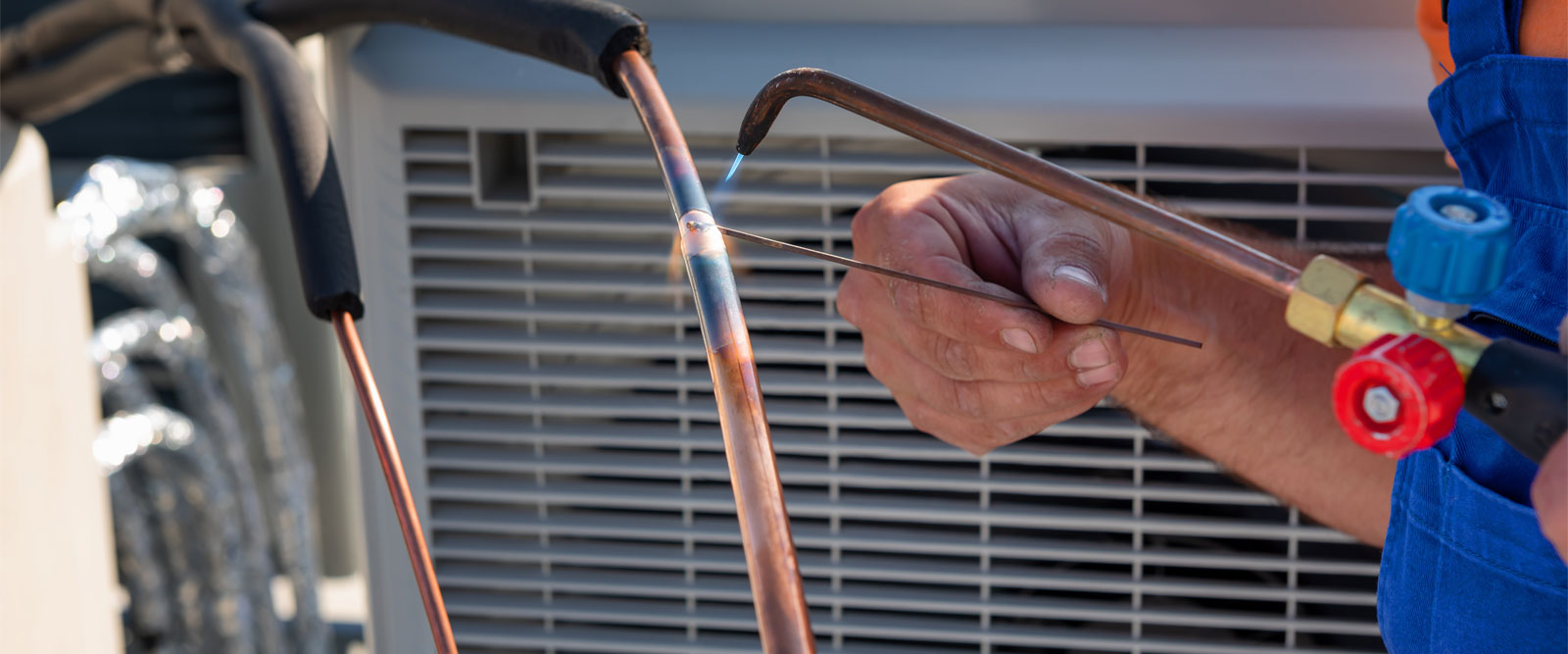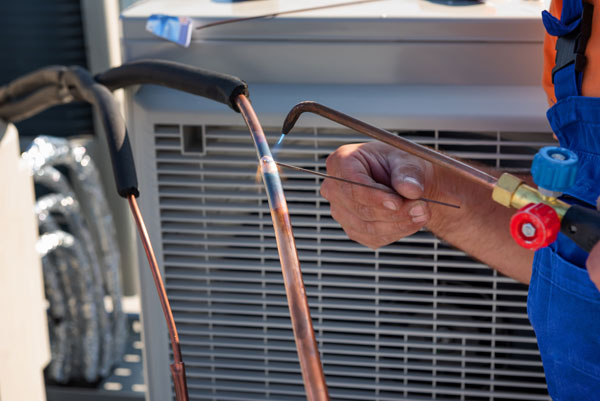You Have a Clogged AC Drain Line, Now What?
During the summertime, we can expect some days with high humidity—it’s just a part of the Texas climate. On those days we beat a hasty retreat indoors to the comfort of air conditioning. Ahhhh, all is good in the world again! But did you notice the water flowing from the base of the air conditioner cabinet?
If left unchecked, this water can damage flooring, walls, and furnishings. This is a problem that must be solved quickly. If your air conditioner appears to be leaking, it is caused by a common problem and the solution is a maintenance project that you can complete with tools at hand.
The Cause of the Problem
A major task of your air conditioner is removing excess humidity from the indoor air. Water condenses on a network of copper tubes inside the cabinet and drips down to a flat tray. A drain tube removes this condensation away from the cabinet.
A problem arises when dust, mold, or debris creates a clog in the entrance to the drain tube or inside the tube itself. Removing this clog will free the tube and allow the water to flow again.
Tools Needed
You will need a few tools and supplies, so gather them before you begin. You will need:
- A screwdriver or socket to remove the cabinet plate
- A wet/dry shop vac
- Duct tape
- 1 cup of bleach, white vinegar, or hydrogen peroxide
- A shop rag or cleaning towel
Step-by-Step Solution
- For your safety, turn off the AC. Find the circuit in your electrical service panel labeled AC and switch it to the “off” position.
- Find the condensation drain line. It will be a rubber tube or PVC line exiting midway down the side of the cabinet, extending outdoors or to a floor drain.
- Apply the duct tape to the shop vac hose to reduce the opening to match the size of the condensation drain line.
- Make sure to remove the shop vac filter before vacuuming water. Turn the shop vac on and remove the drain clog. Expect water to begin flowing immediately—return the condensation drain to the drain position as soon as possible.
Removing the clog will solve the immediate problem and stop the leaking of water, which is the primary concern. After completing this maintenance task, you will have gained a skill that can be repeated as necessary. However, with a few more steps you can prevent clogs from happening in the future.
The Cause of the Clog
Water that condenses from the air is very pure. However, the flat tray that collects the water has also collected dust and debris. In a dark, moist environment, it is possible that mold or mildew is also present. To prevent a clog from forming again, take these steps.
- Use the screwdriver or socket to remove the cover panel for the evaporator chamber. Protect the integrity of any copper tube or electrical wires that passes through this cover plate.
- Inside the chamber, identify the evaporator coil, often in an inverted V-shape. Underneath the evaporator coil, identify the tray that collects the condensation.
- Use the shop vac to remove all of the water, along with dust, debris, or mold.
- Bleach, vinegar, and hydrogen peroxide will help prevent the return of mold and mildew. This treatment should be repeated annually; the beginning of the cooling season is a good time.
- Carefully replace the cover panel, making sure to secure the seal of the chamber.
- When the project is complete, switch the circuit to the “on” position.
- Return to the cabinet in the next few days to make sure that the clog is removed and has not redeveloped.
If this process does not work and you need further assistance, give Dr. Cool a call.
Have A Clogged AC Drain Line?
Call us for information regarding a Clogged AC Drain Line and we can help before damage to your home. Call Doctor Cool & Professor Heat today at 281-338-8751 or email Doctor Cool and let our professional Clogged AC Drain technicians get your AC system ready for Spring.


